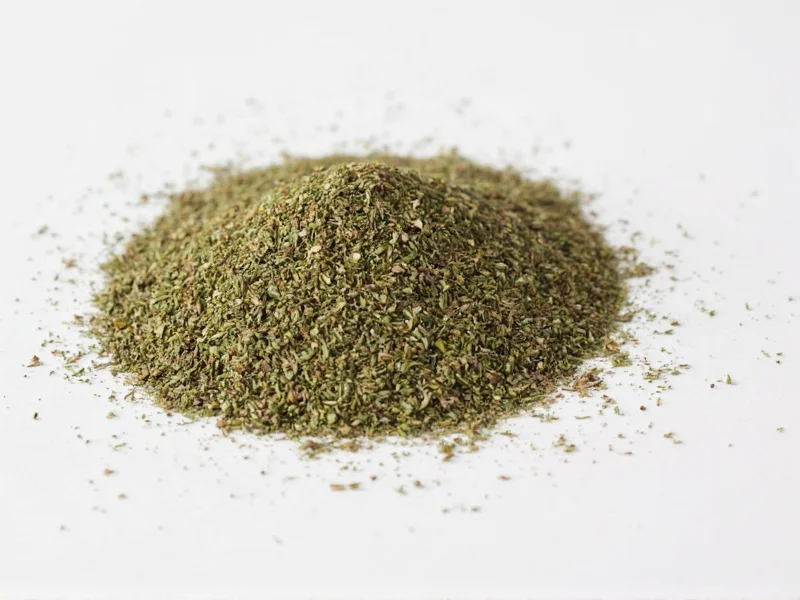When substituting dried thyme for fresh in your recipes, understanding the proper conversion ratio is essential for achieving balanced flavors. Many home cooks make the mistake of using equal measurements, which often results in overpowering, bitter dishes. The 1:3 conversion ratio—where 1 teaspoon of dried thyme replaces 1 tablespoon of fresh thyme—is the culinary standard recommended by professional chefs and food scientists.
Why Dried and Fresh Thyme Require Different Measurements
Thyme undergoes significant chemical changes during the drying process. Fresh thyme contains approximately 80-85% water content, which dilutes its essential oils and flavor compounds. When dried, this moisture evaporates, concentrating the herb's aromatic compounds by roughly three times. This concentration explains why you need less dried thyme to achieve equivalent flavor to fresh.
Food science research confirms that drying herbs increases the concentration of thymol—the primary compound responsible for thyme's distinctive flavor—by 200-300%. This scientific basis validates the standard 1:3 conversion ratio used in professional kitchens worldwide.
Thyme Conversion Reference Chart
| Fresh Thyme | Dried Thyme Equivalent |
|---|---|
| 1 tablespoon | 1 teaspoon |
| 2 tablespoons | 2 teaspoons |
| ¼ cup | 1¼ tablespoons |
| ½ cup | 2½ tablespoons |
| 1 cup | 5 tablespoons |
Practical Substitution Guidelines for Best Results
While the 1:3 ratio provides a reliable starting point, several factors can influence your thyme substitution:
- Recipe cooking time: For long-simmering dishes like stews or braises, reduce dried thyme by 25% since flavors intensify over time
- Thyme variety: English thyme (most common) follows the standard ratio, while lemon thyme may require slight adjustments due to different oil concentrations
- Storage conditions: Older dried thyme loses potency—extend shelf life by storing in airtight containers away from light and heat
- Recipe acidity: In highly acidic dishes like tomato sauces, increase dried thyme by 10-15% as acid can mute herbal flavors
Common Thyme Substitution Mistakes to Avoid
Even experienced cooks sometimes misjudge thyme conversions. Watch for these frequent errors:
- Equal measurement substitution: Using 1 tablespoon dried instead of fresh creates an overwhelmingly strong flavor
- Ignoring stem content: Fresh thyme measurements typically include stems, while dried is pure leaf—account for this when measuring
- Overpacking dried herbs: Spoon dried thyme lightly into measuring spoons rather than packing it down
- Adding dried herbs too late: Dried thyme needs 15-20 minutes of cooking time to rehydrate and release flavors properly
When to Adjust the Standard Conversion Ratio
Certain culinary situations warrant modifying the standard dried to fresh thyme conversion:
- Delicate dishes: For subtle preparations like custards or light sauces, use ¾ teaspoon dried thyme per tablespoon of fresh
- Roasted meats: Increase dried thyme by 20% for dry rubs since surface application doesn't penetrate like fresh
- Homemade blends: When making herbes de Provence or other mixes, maintain consistent ratios across all herbs
- Older dried thyme: If your dried thyme is over a year old, increase quantity by 25-50% to compensate for flavor degradation
Storing Thyme for Maximum Flavor Preservation
Proper storage significantly impacts your thyme's potency and affects conversion accuracy:
- Fresh thyme: Store in the refrigerator with stems in water (like flowers), covered with a plastic bag for 10-14 days
- Dried thyme: Keep in airtight containers away from light and heat; maintains potency for 1-2 years
- Freezing fresh thyme: Preserves flavor better than drying—freeze whole sprigs then strip leaves as needed
- Testing potency: Crush a small amount between fingers—strong aroma indicates good quality; weak scent means replace











 浙公网安备
33010002000092号
浙公网安备
33010002000092号 浙B2-20120091-4
浙B2-20120091-4